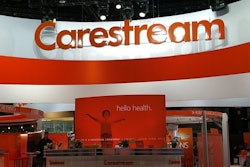
Radiography is medical imaging's first modality, but over a century after its discovery it's still going strong, with new technologies and clinical applications giving x-ray a renewed sense of vibrancy.
At RSNA 2017, one of the most exciting technologies will be artificial intelligence (AI). Researchers are applying AI algorithms to digital x-ray exams to tease new meaning out of the data. For example, AI software will be used to find pneumothoraces and pulmonary nodules on chest radiographs, assess the positioning of feeding tubes, and in general help radiologists get their jobs done.
In a more traditional vein, keeping track of radiography reject rates has always been an important task, but it's gotten even more complicated with the arrival of digital radiography (DR). Several presentations will offer suggestions on how to do it at RSNA 2017.
Radiation dose isn't quite as big an issue in radiography as it is in modalities like CT, but it's always a good idea to keep dose as low as reasonably achievable (ALARA). Several presentations at McCormick Place will discuss work designed to better track and reduce dose.
Interest in digital tomosynthesis continues to percolate. You'll find a number of sessions in Chicago on this intriguing technology, including a study from researchers in Italy who used tomo as part of a lung cancer screening program and also a talk by Japanese researchers who have developed a tomo unit that doesn't need to move to acquire images.
All these talks and presentations are listed below, and if you'd like more information, check out the RSNA 2017 website by clicking here.
See you in Chicago!



















